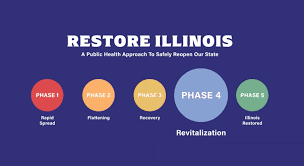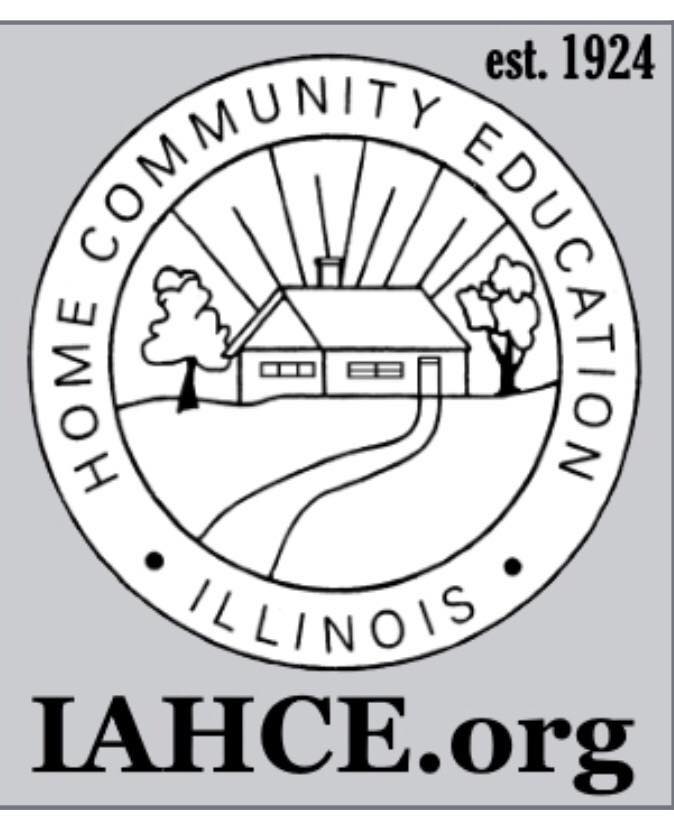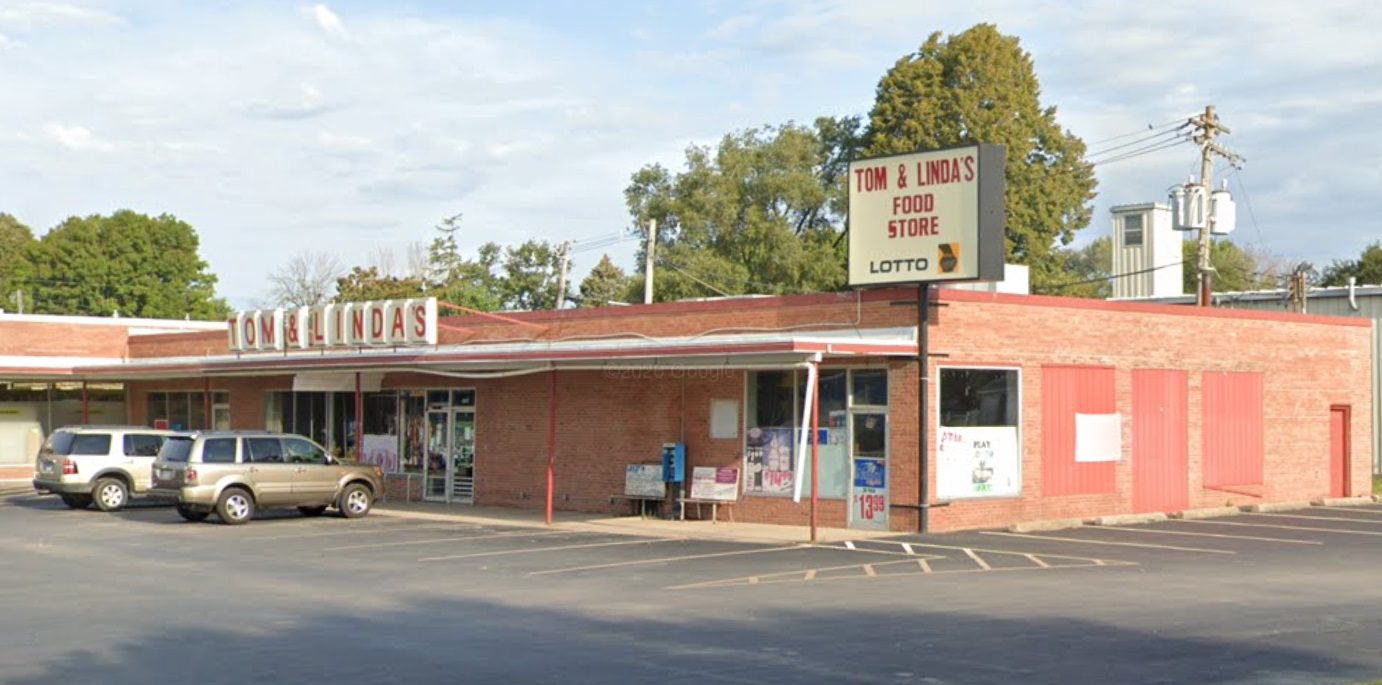PHASE 4 GUIDELINES
Earlier today the Illinois Department of Commerce and Economic Opportunity (DCEO) released the guidelines for Phase 4. Phase 4 begins this Friday, June 26th.
IRMA provided a high level summary of those guidelines in a previous correspondence. Below is an industry-by-industry breakdown of the KEY regulations for Phase 4. Please click on the the links provided if you want the complete detailed report.
Health & Fitness Centers
- Capacity: Health and fitness workplaces may operate at maximum of 50% of occupancy at any given time.
- Screening: Employers should conduct in-person screening of employees upon entry into workplace to verify no presence of COVID-19 symptoms. If an employee’s shift is greater than 5 hours, employers should also conduct mid-shift screening to verify no presence of COVID-19 symptoms (in person preferred, though virtually is permitted).
- Reporting: If employee reports having any COVID-19 related symptoms, employers should encourage employee to contact their health care provider; if multiple employees report having any COVID-19 related symptoms or test positive for COVID-19, employers should notify their local health department within one day of being informed of the prevalence of COVID-19 symptoms in the workplace or positive test results.
- Sanitation:
- Fitness centers should provide sanitizing supplies near all equipment and exercising areas (e.g. treadmills, weights, studios);
- Fitness center employees should fully clean and sanitize exercising areas (e.g. yoga room) before and after use by individuals;
- Sanitization of locker rooms and showers should be completed at least every hour ;
- Fitness center employees should fully clean and sanitize any equipment provided before and after use by individuals; and
- All required disinfecting, cleaning, or sanitizing activities to be conducted by employees should be within their normal workday or during otherwise compensated time.
- Groups: Multiple groups permitted in a space at once as long as:
- Facilities allow for social distancing of participants and employees;
- 30-ft. of distancing is maintained between groups; and
- Areas for each group are clearly marked to discourage interaction between groups.
- Open Gym Space:
- For open gym space, fitness center should assign 1 employee per 4,000 sq. ft. to monitor social distancing and sanitize equipment between uses; and
- For open gym space, fitness centers should develop a method to inform members of available facility capacity before members arrive at the facility (e.g. reservation system, overview of days/ times when
- establishment is typically most crowded).
- Face Coverings: Consumers and employees should continue to wear face coverings when not working out.
Personal Care Services (Hair salons, hair braiders, barber shops, nail salons, spas, massage therapy clinics, waxing centers, tattoo parlors, tanning salons, hair club services, other providers of personal care services, and salons operated by schools of barber, cosmetology, esthetics, hair braiding, and nail technology)
- Capacity: Personal care workplaces may operate at maximum occupancy of 50% of capacity.
- Screening: Employers should conduct in-person screening of employees upon entry into workplace to verify no presence of COVID-19 symptoms. If an employee’s shift is greater than 5 hours, employers should also conduct mid-shift screening to verify no presence of COVID-19 symptoms (in person preferred, though virtually is permitted).
- Reporting: If employee reports having any COVID-19 related symptoms, employers should encourage employee to contact their health care provider; if multiple employees report having any COVID-19 related symptoms or test positive for COVID-19, employers should notify their local health department within one day of being informed of the prevalence of COVID-19 symptoms in the workplace or positive test results.
- Sanitation:
- Service provider should fully disinfect work stations before serving each customer and at closing time;
- After use, service provider should fully clean and sanitize reusable customer articles (e.g. towels, blankets, capes, robes) before they can be used by another customer or alternatively use single-use articles and dispose of articles after customer use; and
- All required disinfecting, cleaning, or sanitizing activities to be conducted by employees should be within their normal workday or during otherwise compensated time.
- Workspace: Reservation only, no walk-ins.
- Face Coverings: Consumers and employees should continue to wear face coverings.
Restaurant and Bar Guidance (indoor and outdoor). Restaurant and bar establishments are allowed to resume indoor dining operations.
- Capacity: Seated area capacity of restaurants and bars should be determined by arranging seating to provide a minimum of six feet between tables or other designated patron service areas. Indoor dining can reopen with groups of 10 or less, with tables spaced 6-feet apart in seated areas and with standing areas at no more than 25% of capacity.
- Booths: Employers may use consecutive booths to serve patrons of unrelated parties only if employer installs an impermeable barrier with a height of 6-ft or greater from the floor between booths. Use of barriers should not impede entry/ exit or impose a fire risk.
- Screening: Employers should conduct in-person screening of employees upon entry into workplace to verify no presence of COVID-19 symptoms. If an employee’s shift is greater than 5 hours, employers should also conduct mid-shift screening to verify no presence of COVID-19 symptoms (in person preferred, though virtually is permitted).
- Reporting: If employee reports having any COVID-19 related symptoms, employers should encourage employee to contact their health care provider; if multiple employees report having any COVID-19 related symptoms or test positive for COVID-19, employers should notify their local health department within one day of being informed of the prevalence of COVID-19 symptoms in the workplace or positive test results.
- Single-service Utensils: Have sufficient stocks of single-service and single-use articles (e.g. tableware, carryout utensils) available in place of re-usable dishes and utensils. Discard after use. If not, ensure all reusable food service items are handled with gloves and washed properly in 3 compartment sink or in a dishwasher.
- Buffets and self-service food stations (e.g. hot and cold bars, bulk items, baked goods) should adhere to additional minimum guidelines:
- Patrons may self-serve food if hand sanitizer stations are located at both ends of the buffet or self-service station and signage is posted to require hand sanitizing before each visit to a station;
- If areas are not configured for self-service, designated staff (e.g., buffet attendant) should serve onto patron’s plate wearing appropriate face covering and gloves, while maintaining 6-ft social distancing with patrons and other employees;
- Separate buffet stations should maintain 6-ft distancing and allow for social distancing between patrons throughout establishment;
- Impermeable barriers should be put in place between servers and patrons; patron and servers should not exchange or pass the same plate multiple times;
- Queue points should be established 6-ft apart with markers to encourage social distancing;
- Queue should be limited to patrons in respective party to the extent possible;
- Utensils used for serving should be changed hourly.
- Self-service beverage fountains are permissible with the following precautions:
- Customers may not reuse cups and should refill beverages with new disposable cups;
- Customers must not touch the fountain spigot and should minimize contact with dispensing surfaces; and
- Fountain surfaces must be cleaned and sanitized every hour.
- Sanitation:
- Clean and disinfect common areas (e.g., restrooms, cafeterias), high-touch areas and equipment (e.g. door knobs, display cases, equipment handles, check-out counters, order kiosks) more frequently; every hour recommended for high-traffic areas;
- Disinfect tables and chairs between parties and again at closing time;
- Create and implement an enhanced cleaning/sanitizing schedule for all food contact surfaces, and cleaning/disinfecting of non-food contact surfaces; if practical, have designated staff member that is responsible for cleaning;
- Sanitization of multi-use items (e.g., menus, if reused, special cards, pens, check presenters, etc.) should be completed after each use
- All required disinfecting, cleaning, or sanitizing activities to be conducted by employees should be within their normal workday or during otherwise compensated time.
- Eliminate any table presets (e.g., table tents, menus, ketchup bottles, salt and pepper shakers, lemons, straws, shared condiments, etc.);
- Eliminate the service of shared snacks at the bar.
- Use disposable or touchless menus, if practical, or use menus that can be sanitized between each use. If practical, QR Digital menu or app-based ordering should be used.
- To the extent possible, eliminate refilling patron beverages and use a new glass cleaned using proper dishwashing procedures or a new disposable cup.
- Face Coverings: Consumers and employees should continue to wear face coverings. Restaurants and bars should have an adequate supply of personal protective equipment (PPE) and/or cloth face coverings for staff, as well as a policy and training for staff to wear their masks
Retail Guidance (e.g. grocery stores, hardware stores, clothing stores, pharmacies, department stores, shopping malls, etc.)
- Capacity: Retail workplaces may operate at maximum of 50% of store capacity.
- Screening: Employers should conduct in-person screening of employees upon entry into workplace to verify no presence of COVID-19 symptoms. If an employee’s shift is greater than 5 hours, employers should also conduct mid-shift screening to verify no presence of COVID-19 symptoms (in person preferred, though virtually is permitted).
- Reporting: If employee reports having any COVID-19 related symptoms, employers should encourage employee to contact their health care provider; if multiple employees report having any COVID-19 related symptoms or test positive for COVID-19, employers should notify their local health department within one day of being informed of the prevalence of COVID-19 symptoms in the workplace or positive test results.
- Workspace: Shopping mall food courts and grocery and convenience
- store dining, drinking and self-service areas should follow Restaurant and Bar guidelines.
- Face Coverings: Consumers and employees should continue to wear face coverings.
Service counters (e.g. dry cleaners, car washes, repair shops, etc.)
- Capacity: Service counter workplaces may operate at maximum of 50% of capacity.
- Screening: Employers should conduct in-person screening of employees upon entry into workplace to verify no presence of COVID-19 symptoms. If an employee’s shift is greater than 5 hours, employers should also conduct mid-shift screening to verify no presence of COVID-19 symptoms (in person preferred, though virtually is permitted).
- Reporting: If employee reports having any COVID-19 related symptoms, employers should encourage employee to contact their health care provider; if multiple employees report having any COVID-19 related symptoms or test positive for COVID-19, employers should notify their local health department within one day of being informed of the prevalence of COVID-19 symptoms in the workplace or positive test results.
- Workspace: Service providers should limit the occupancy of common areas/ break rooms to allow for social distancing of 6-ft or greater by removing/decommissioning furniture or staggering break times; this guideline is not intended to diminish employees break time requirements.
- Face Coverings: Consumers and employees should continue to wear face coverings.
Theaters (indoor and outdoor)
- Capacity: Indoor theaters and performing arts venues should operate at lesser of 50 guests OR 50% of overall theater or performance space capacity. Crowd scenes are not to exceed 50 people. Outdoor theaters and performing arts venues should operate at 20% of overall theater or performance space capacity.
- Screening: Employers should conduct in-person screening of employees upon entry into workplace to verify no presence of COVID-19 symptoms. If an employee’s shift is greater than 5 hours, employers should also conduct mid-shift screening to verify no presence of COVID-19 symptoms (in person preferred, though virtually is permitted).
- Reporting: If employee reports having any COVID-19 related symptoms, employers should encourage employee to contact their health care provider; if multiple employees report having any COVID-19 related symptoms or test positive for COVID-19, employers should notify their local health department within one day of being informed of the prevalence of COVID-19 symptoms in the workplace or positive test results.
- Workspace:
- On website and digital ticket purchasing sites, event organizers should clearly indicate face covering requirements, social distancing guidelines, cleaning protocols, and any reduced capacity limit, in multiple languages as needed; and
- Venue operators should ensure at least 6-ft. between seats occupied by patrons that are not members of the same household or party. If seats cannot be moved, venue operators should limit number of open seats to ensure social distancing.
- Concessions: Concessions must follow Restaurant and Bar guidelines for all food and beverage operations and must be one of the following:
- Delivered by a server who takes orders from guests while seated with distancing requirements laid out in Restaurant and Bar guidelines; OR
- At an outdoor kiosk, purchased pre-packaged via “grab and go” with queuing areas clearly marked to observe social distancing; OR
- At an indoor quick service areas over 500 square feet, purchased pre-packaged via “grab and go” (no queuing permitted); OR
- At indoor quick service areas 500 square feet and under, purchased pre-packaged via “grab and go” with queuing areas clearly marked to observe social distancing.
- Concession stand employees should not refill patron food (e.g. popcorn) and/or beverage containers. Refills are still allowed at venue operators’ discretion, but must be completed using new food and/or
- beverage containers.
- Sanitation: Clean and disinfect occupied tables and seats between use by different groups or parties, and again at closing time.
- Attendance: Venue operators should have a plan to limit congregation during entry/exit and throughout duration of the event, including any intermission
- For venues with multiple theaters or performance areas, schedule staggered show start and end times;
- If practical, schedule staggered patron arrival times (timed ticketing), with email or mobile notification;
- If practical, allow patrons to select their entry time and location;
- If practical, limit number of unscheduled entries;
- If practical, designate specific point of entry for patrons based on seating location;
- If practical, release patrons by row, beginning with those closest to exits (use videoboard/ PA announcer to facilitate release);
- If applicable, venue operators should create plan to limit congregation in parking lots and assign parking spaces to patrons during the digital sales process;
- Venue operators should develop a method to inform customers of available facility capacity before customers arrive at the facility (e.g. reservation system, overview of days/ times when establishment is typically most crowded).
- Face Coverings: Consumers and employees should continue to wear face coverings.

















